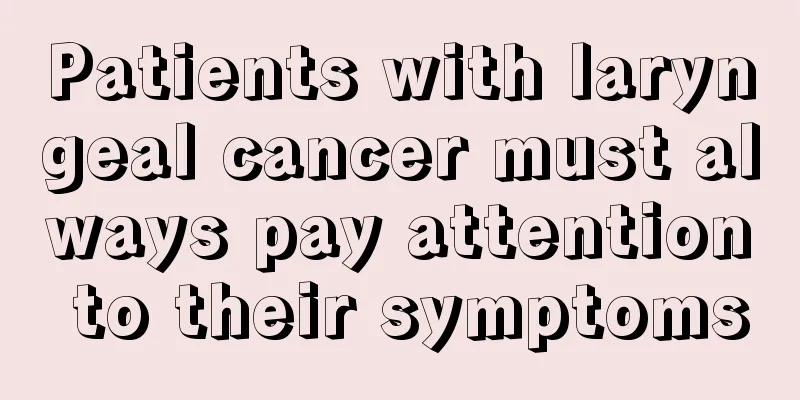Nutritional issues after esophageal cancer surgery

|
The esophagus and stomach are important parts of the human digestive system: they are organs that transmit, transport, and hold food. Most patients with esophageal cancer and cardia cancer need to undergo subtotal or partial resection of the esophagus and stomach to achieve a radical cure, using the stomach or intestine as a replacement transplant to reconstruct the digestive tract. The entire surgical process is highly traumatic and often easily causes digestive dysfunction. For this reason, it is very important for patients with esophageal cancer and cardia cancer to "eat well" after surgery, which can be roughly divided into four stages. (1) Nasogastric feeding stage 1 to 5 days after surgery, the patient is in the traumatic period of surgery, the anastomosis has not yet healed, the gastrointestinal function has not recovered well, and the digestive function is poor. During this period, only nasogastric feeding can be used. During the nasogastric feeding stage, the patient can be fed with mixed milk, vegetable juice, fruit juice, rice soup, etc. The injection volume can be increased from 500ml on the first day, divided into 2 to 3 drips, and then increased to 1500-2000ml per day according to the patient's tolerance. The temperature during dripping should be close to body temperature. The nasogastric feeding nutrient solution is required to contain an appropriate proportion of protein, fat, carbohydrates, vitamins, salt and water. (2) Liquid food stage Refers to 5 to 10 days after surgery. During this period, the patient has basically passed the surgical trauma period, and gastrointestinal function begins to gradually recover, manifested by appetite and anal gas. A small amount of boiled water (3 to 5 tablespoons) can be given first, and then gradually increased to 30 to 50 ml. If there is no obvious discomfort, rice soup, egg soup, fresh milk, fish soup and various poultry stews can be given, 100 to 200 ml each time, 5 to 7 times a day. (3) Semi-liquid diet stage Starting from the second week after surgery. During this period, the various drainage tubes left in the patient after surgery have been removed, and intravenous infusion of fluids has gradually stopped. Except for a few elderly or very elderly patients who cannot get out of bed, most of them can walk and their appetite gradually increases. However, during this period, only small meals can be eaten frequently, with the main food being easily digestible and residue-free (such as porridge, noodles, egg custard, tofu, etc.). In particular, some patients with a large appetite before surgery should avoid eating a large amount of food to avoid digestive tract complications or anastomotic failure. (4) Normal diet stage This stage generally starts from the fourth week after surgery. During this period, most patients have been discharged from the hospital to rest at home and are cared for by their relatives. At this time, the diet range can be expanded as much as possible (except fried, pickled, and sweet foods). Except for the foods that the doctor specifically emphasized not to eat when discharged from the hospital, the patient can be guided to do some appropriate physical activities to facilitate digestion and absorption. A small number of patients may experience symptoms such as upper abdominal fullness, diarrhea, and pantothenic acid during this period. They can take 20 mg of metoclopramide (2 tablets), 3 times a day: 2 tablets of compound phenethylpiperidone, 3 times a day. If the symptoms are still not relieved after taking the medicine, the patient can go to the hospital for diagnosis and treatment. |
<<: Diagnosis and Differentiation of Terminal Esophageal Cancer
>>: How many types of precancerous lesions are there for laryngeal cancer?
Recommend
What are the typical symptoms of lung cancer patients? Introduction to the typical symptoms of lung cancer patients
Because of the existence of lung cancer, many liv...
Does ginger shampoo really work?
I believe many people know what effect ginger sha...
Can liver cancer be inherited from generation to generation?
Liver cancer is a serious disease that may occur ...
What pillow is good for cervical spondylosis
When it comes to cervical spondylosis, I believe ...
Can patients with lymphoma get pregnant?
It is best not to get pregnant, because pregnancy...
What are the symptoms of five-heart heat?
Five-heart fever is quite common in traditional C...
Osteosarcoma will shorten life expectancy by several years
Osteosarcoma is a distant and unfamiliar disease ...
The difference between grass carp and koi
There are huge differences between grass goldfish...
How to check for premature heart beats?
All patients should pay attention to the examinat...
Is it harmful to drink water from a color-changing cup frequently?
When we go to bars and KTVs, we often see a very ...
Symptoms of erythematous antral gastritis
If you are used to eating one meal and skipping t...
Is erythema nodosum easy to treat?
Erythema nodosum is a common skin disease. After ...
Will tooth extraction affect memory?
Tooth extraction is a method of solving dental pr...
What should we do if adults’ immunity decreases? Eat more of these foods
Immunity is a defense mechanism in the human body...
Early symptoms of rectal cancer
The early symptoms of rectal cancer may not be ob...









